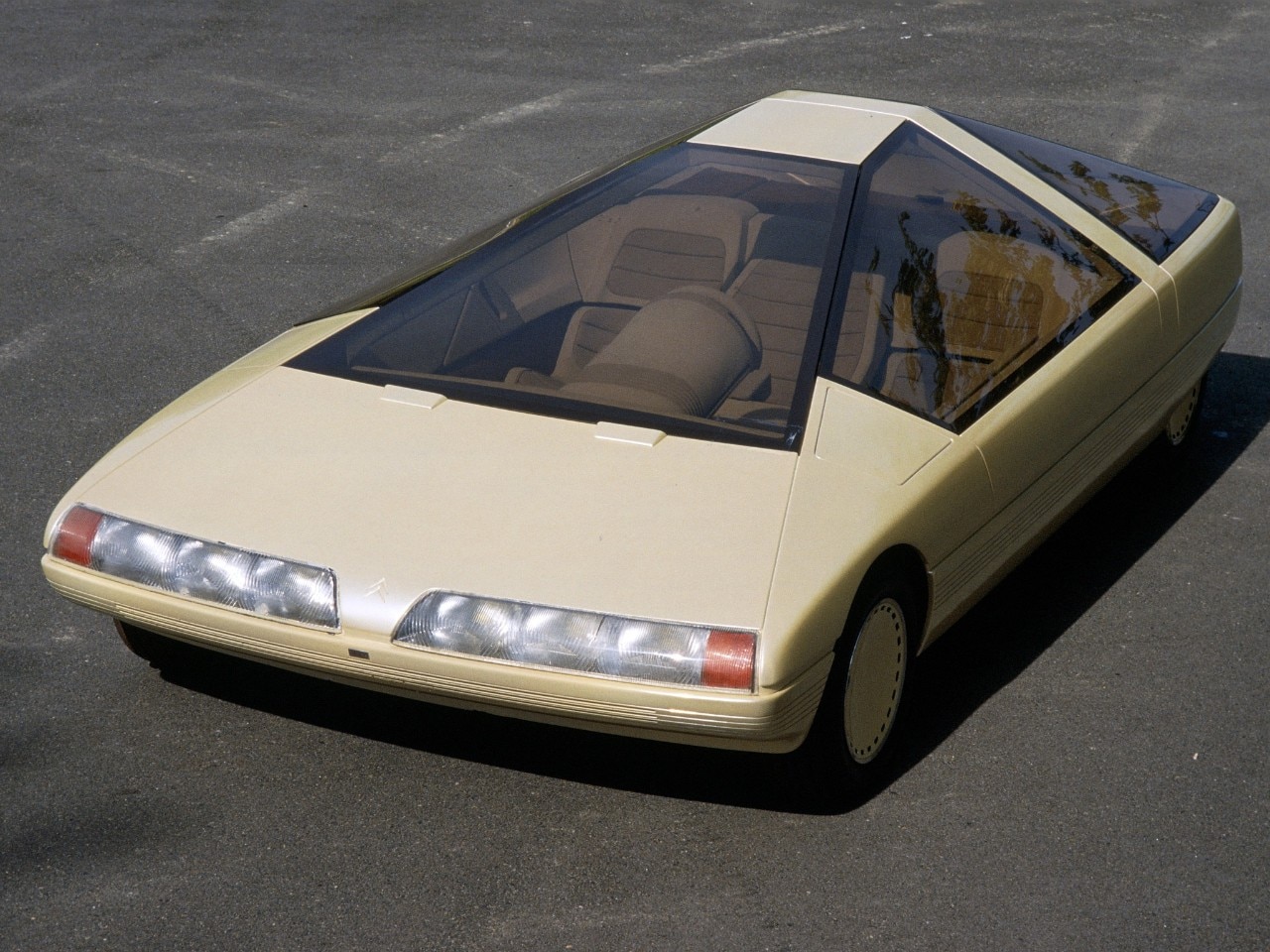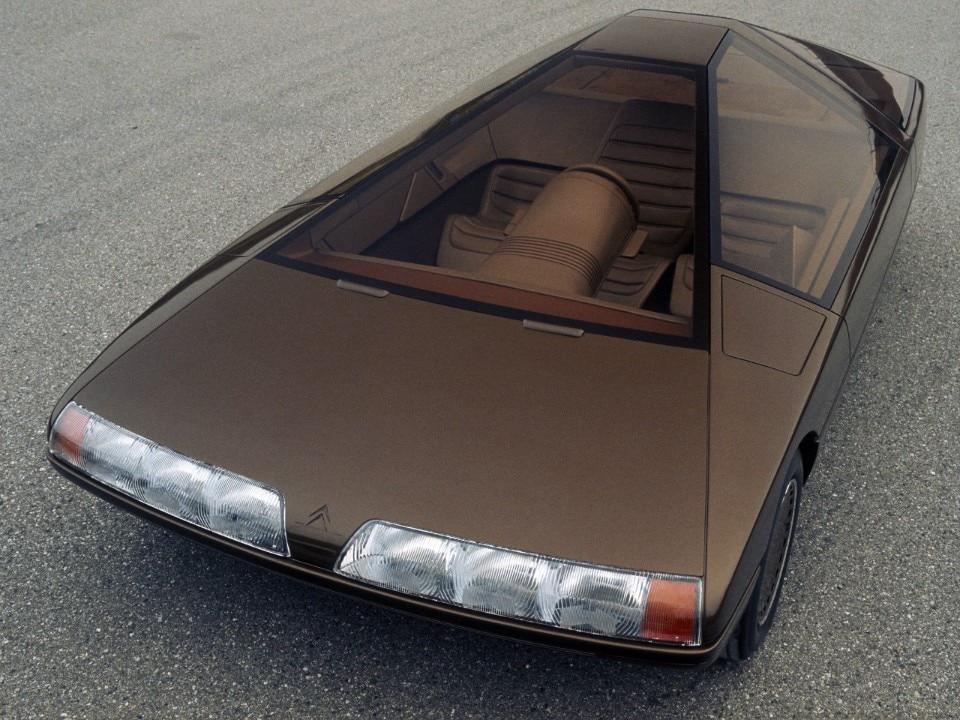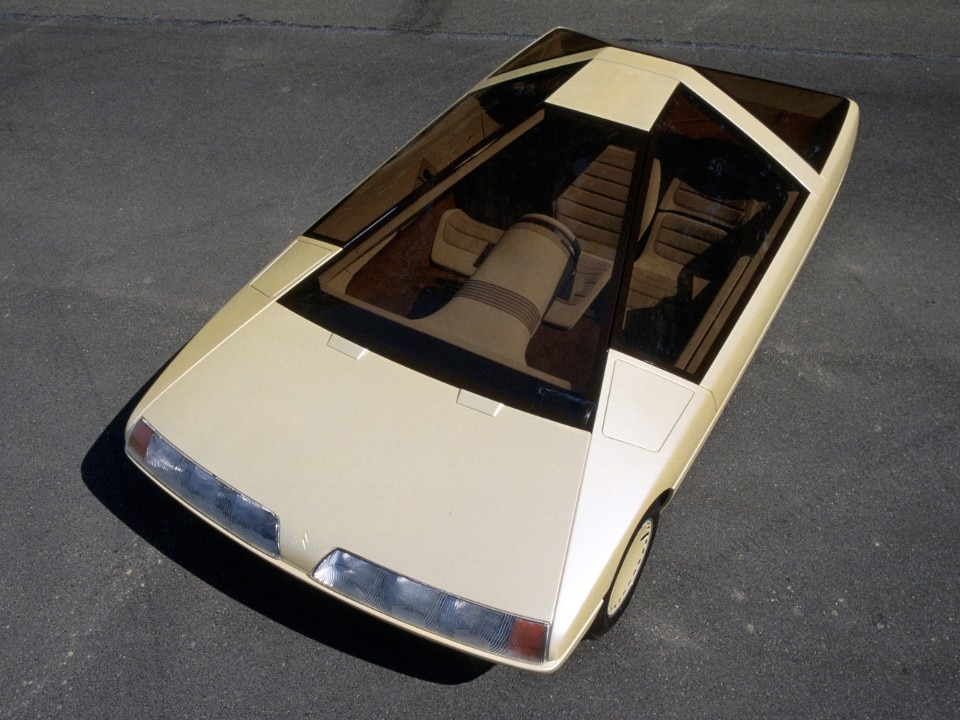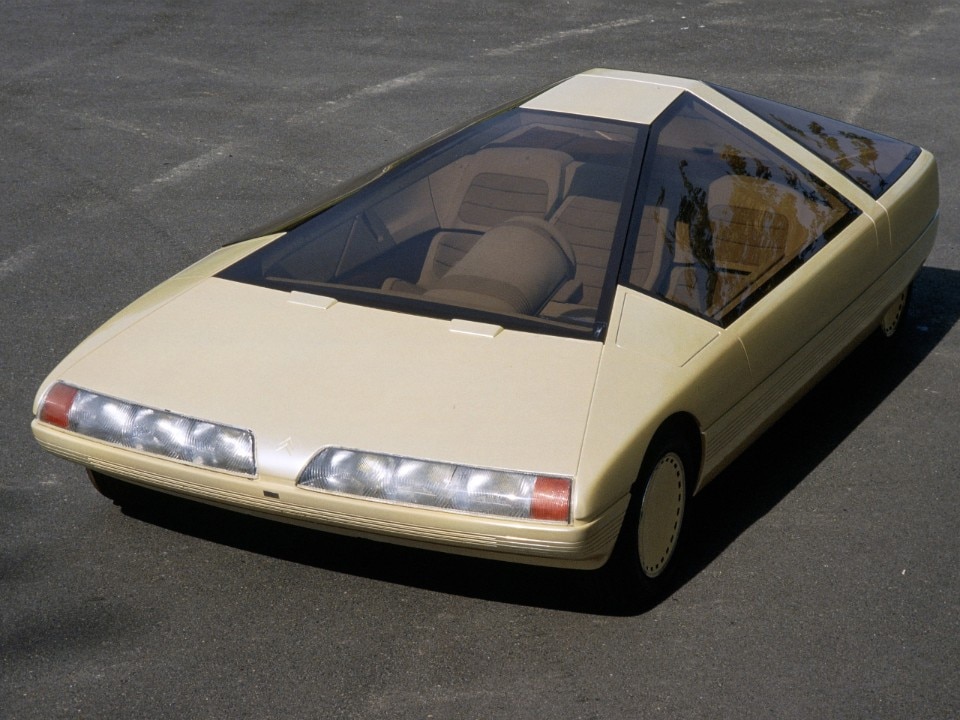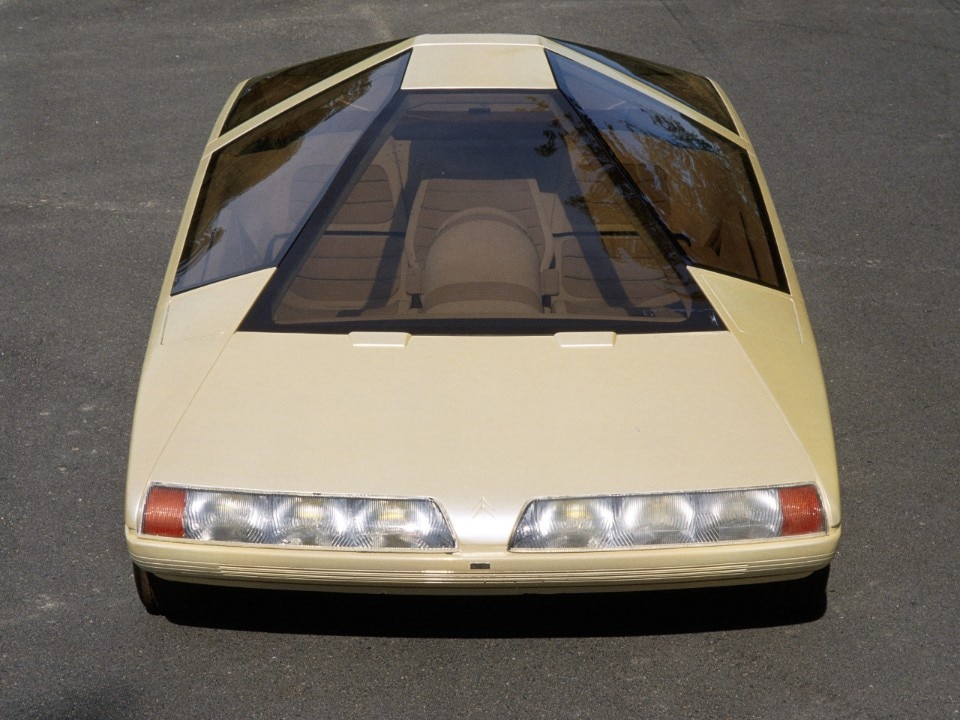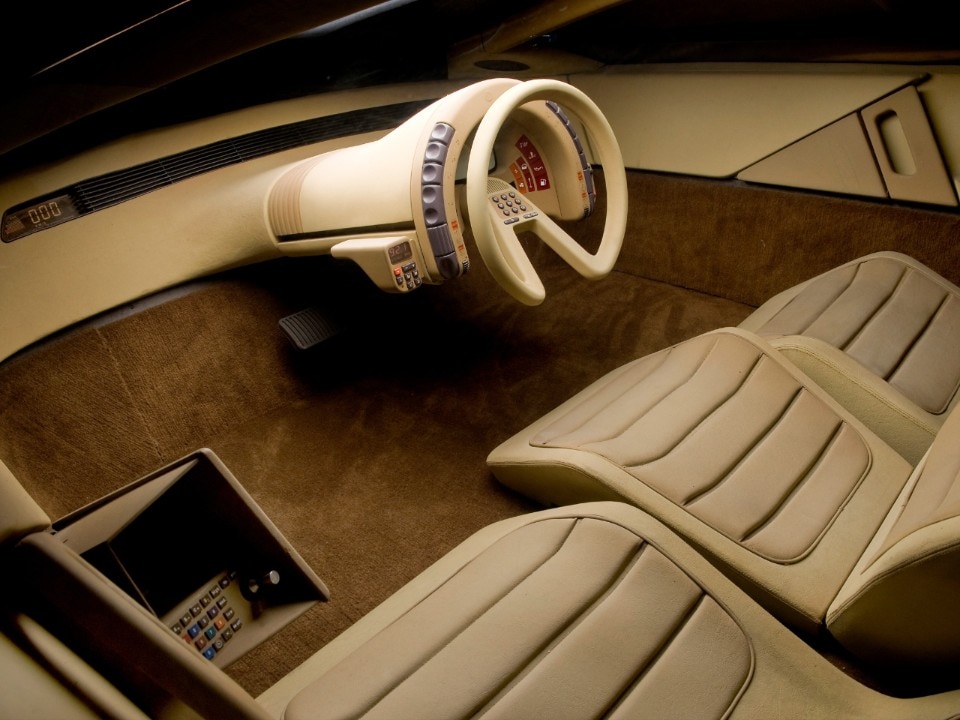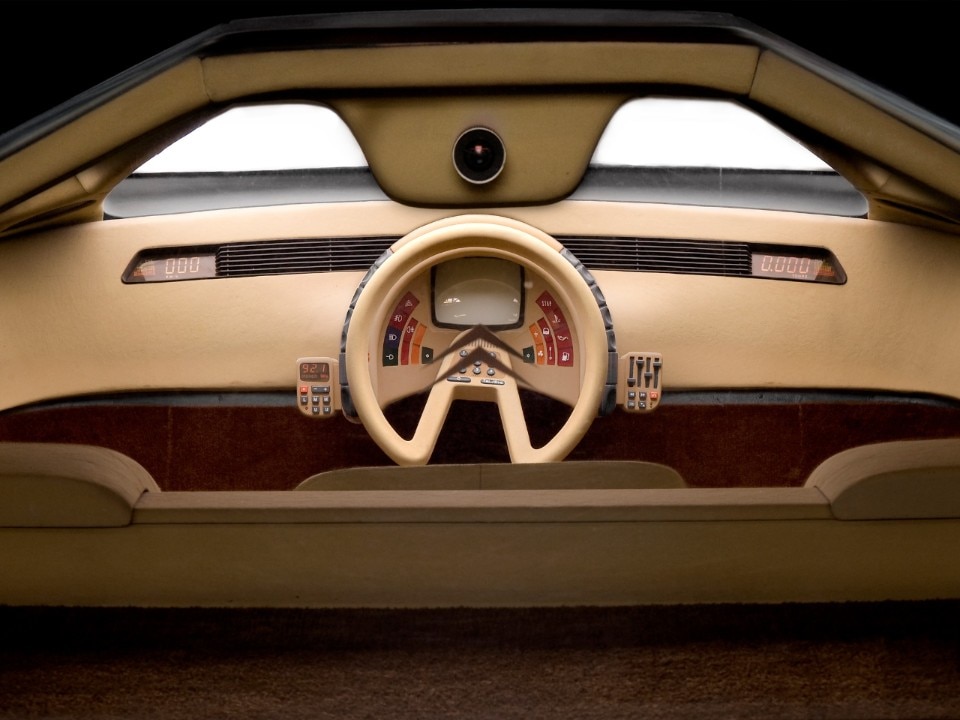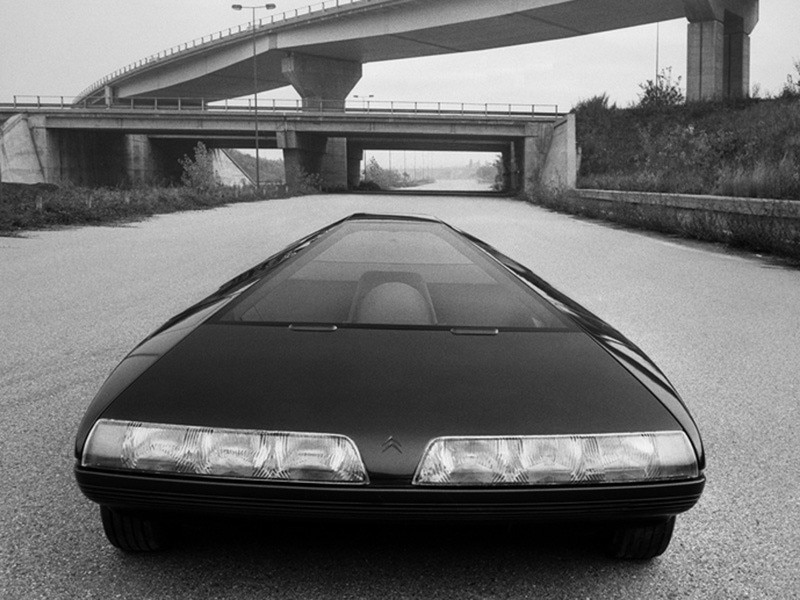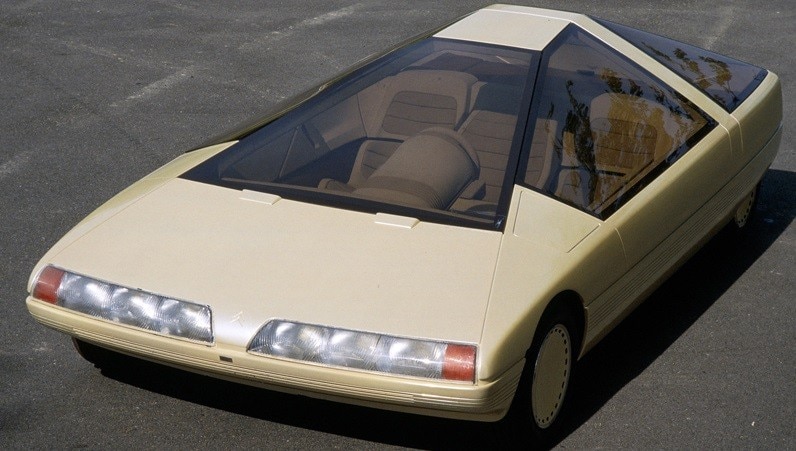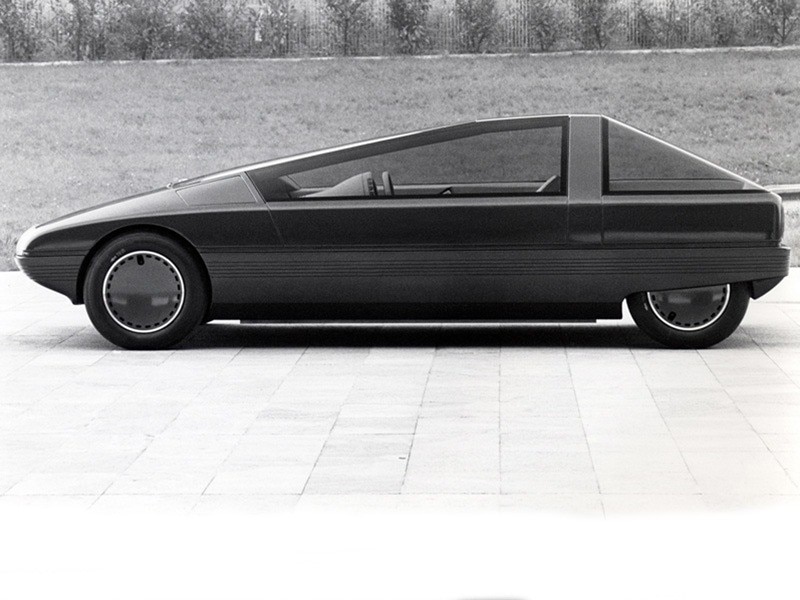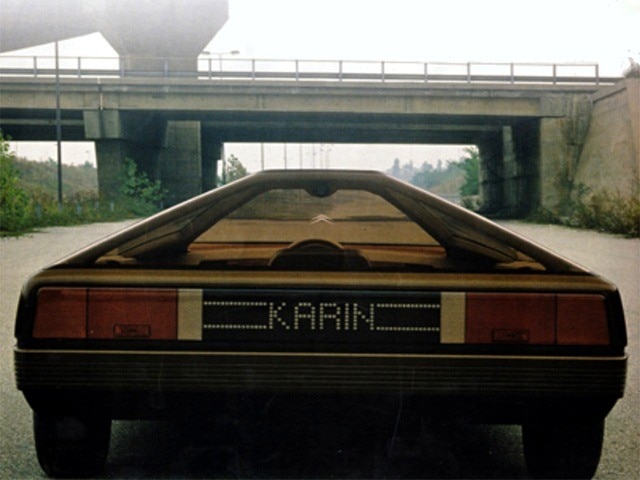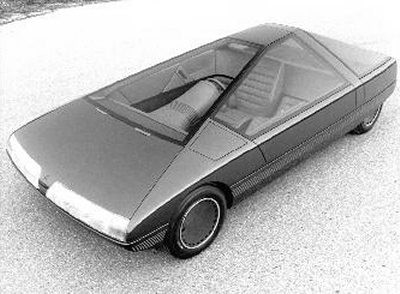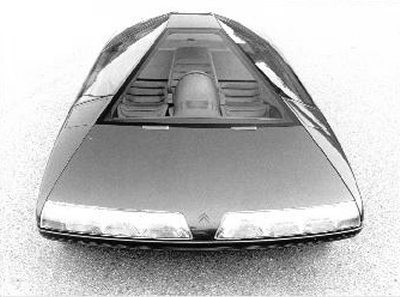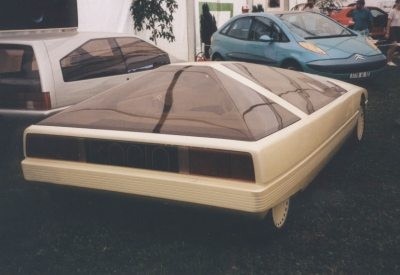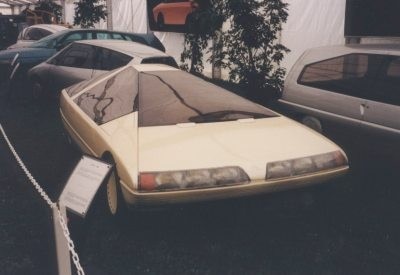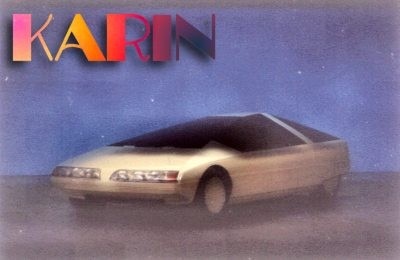A poster from the 1980s warned that it was an “excursion dans l’innovation”. And Citroën Karin had a lot of innovation indeed. When it was first presented at the Paris Motor Show, it couldn’t help but attract the astonished gaze of visitors – it was quite unusual to see a pyramid in a motor show, let alone a pyramid on four wheels. The shapes are so bizarre (or innovative, it depends on how you see it) that we haven’t gotten used to it yet. Karin’s closest relative is Tesla’s Cybertruck, the car that was presented just a few months ago and that is so brutalist that it attracted (many) astonished and (even more) outraged comments.
But let’s go back to the Karin, since the interiors of that glass-and-metal pyramid were even more astonishing. At a glance, we immediately spot an “Italian” reference – this French car is very similar to the Lancia Sibilo designed by Marcello Gandini and presented two years earlier. But it also reminds us of an airplane. If we added a pair of wings, it’d become a 1981 F-117 Nighthawk, one of the military aircrafts that most influenced mass culture with its squared design. Every little detail of the glass surface stands out, from the bodywork to the roof the size of an A3 sheet of paper. And it could also accommodate two passengers beside the driver. The view is deceiving. When seen from a three-quarter view, the Karin looks very tall and slender. But if you look at it from the front, you can tell that it is flat. The car is 1.075 meters high, which is less than the supercars we have today.
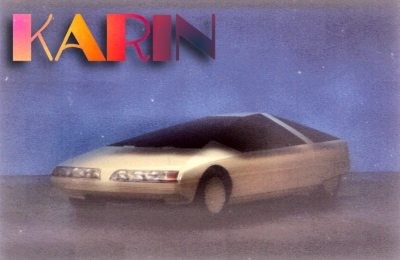
Now, let’s hop in the Karin to admire its interiors. Its butterfly-wing doors aren’t too comfortable. They open upwards, but pyramids aren’t hotels after all. Once inside, the driver finds himself inside a cream-colored spaceship. Anyone who has seen Ridley Scott’s Alien or Robert Wise’s Star Trek at the movie theater finds its quite familiar (both movies came out in 1979). The interior of the Karin is glacial, retro-futuristic. It is an exalting and amazing mix of compassed elegance and electronic coldness. The driving position is in the middle, while the two passengers are slightly behind. It sounds weird, but in reality, well find this configuration twelve years later in another supercar, the 1992 McLaren F1.
The steering wheel looks like a cloche – it almost looks like it’s going to turn into a joystick. Many small buttons are located in the center of the steering wheel, while others golden-colored ones surround it. The idea is that the driver could be able to control almost everything without ever letting go of the steering wheel. The real gem, however, is on the dashboard, where a screen pops up. It looks like the displays we have in today’s cars, but its rounded shape makes us immediately realize that it’s a mini cathode ray tube screen. But its function is really modern – it displays (or rather it should have displayed, since it’s remained a concept, information about the road and the car.
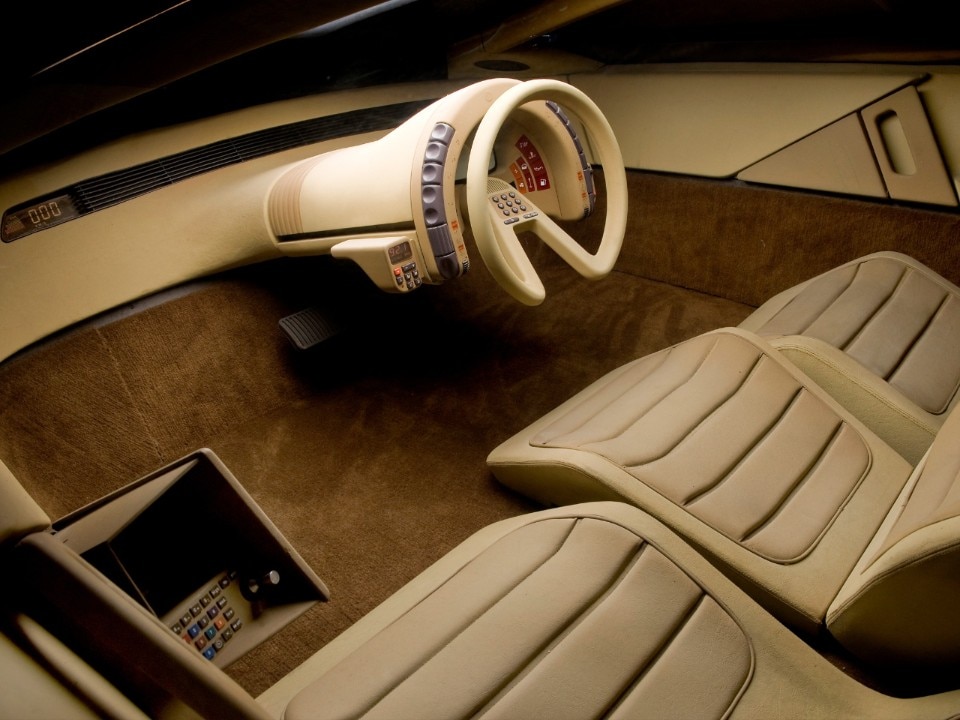
Who could design a car like this? A man so creative (and smart) to even change his last name. We’re talking about Italian-French Trevor Forst, director of the Citroën Style Centre, who soon understood that design was speaking Italian, and thus changed his surname to Fiore, taking it from his mother. At that time, Italy was constantly discovering new talents and being part of them meant being able to experiment with bizarre styles. Italians were allowed (almost) everything, even to consider something unusual an intellectual style exercise.
Italy has two more things to do with Citroen’s car. The first is the name, which starts from the English “car” and evolves into the Italian “cara” and “carina” and then was changed into Karin to make it more international (after all, Citroën was French). Then there is the manufacturer. The only model ever made was produced by the Turin-based company Carrozzeria Coggiola, an expert in concepts and unique pieces such as the very square Janus of 1978 and the very round Cinquecento Fionda of 1992.
The press of the time had defined the display of the car as “the TV on the dashboard” and many had noticed that such objects, when implemented in production cars, would “disorient” the driver. Now we can safely say that this isn’t true at all, but it took forty years.


